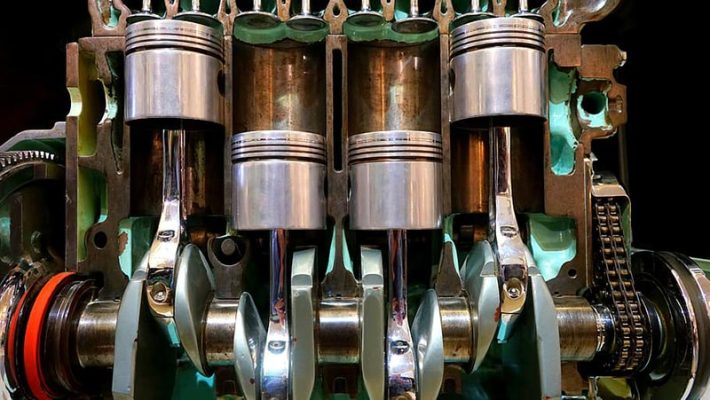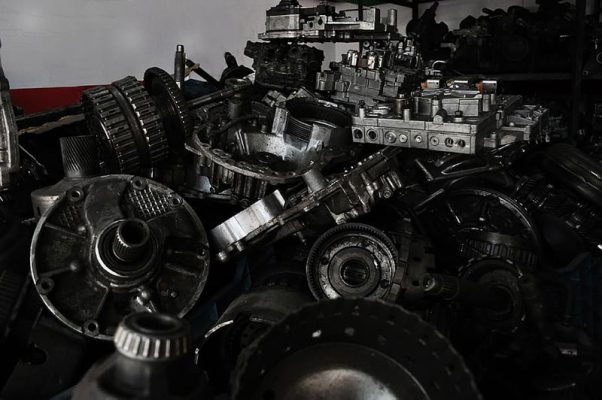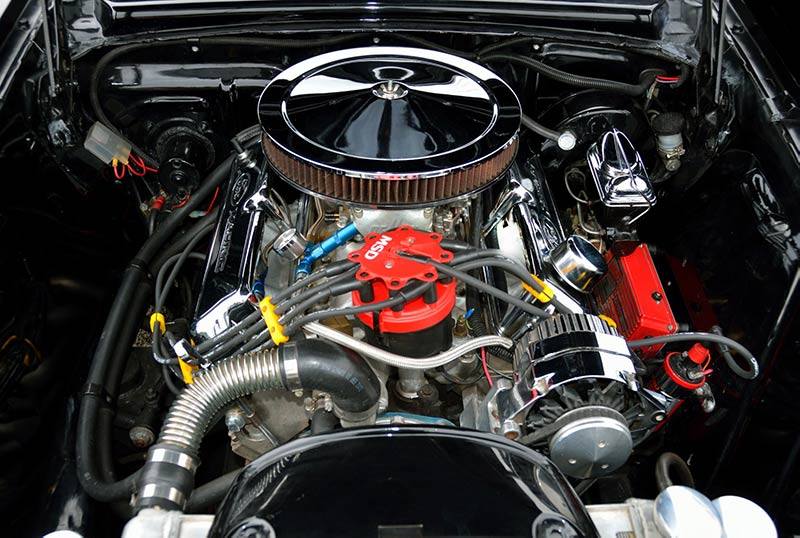Best Volvo 240 Parts Car– Full Body, All Original Components: The Volvo 240 remains one of the most iconic vehicles in automotive history, celebrated for its rugged durability, distinctive boxy aesthetic, and industry-leading safety features.
Introduced in the mid-1970s, the 240 quickly earned a reputation for reliability and longevity, with many of these vehicles still cruising the roads today. Whether used as a family sedan, a taxi, or even in motorsports, the Volvo 240 has proven versatile, dependable, and rugged, cementing its status as a classic.
A full-body, all-original Volvo 240 parts car is a goldmine for restoration enthusiasts. It provides an authentic source for original components and offers a chance to preserve the vehicle’s historical significance and maintain its factory-designed integrity. Finding an intact parts car with original features such as body panels, trim, and interior elements is invaluable for achieving a period-correct restoration.
These components, increasingly complex to source as time passes, are crucial in maintaining the Volvo 240’s legacy and ensuring its continued appreciation among collectors and enthusiasts. Owning and restoring a Volvo 240, especially with genuine parts, allows you to keep a piece of automotive history alive for generations.
The Legacy of the Volvo 240 – Why It’s a Classic?
Introduced in 1974 and produced until 1993, the Volvo 240 earned a reputation for reliability and safety. Designed with longevity in mind, it was one of the first cars to feature crumple zones, solidifying Volvo’s role as a safety pioneer. The 240 was versatile, serving as a family sedan, taxi, and rally car, proving its capability in diverse conditions.
Its durability and adaptability made it a cult classic, cherished by enthusiasts for its rugged design and timeless appeal. As the years went by, the value of original parts increased, making the 240 a sought-after vehicle for restoration projects and a lasting symbol of Volvo’s legacy.
The Value of an All-Original Volvo 240 Parts Car
For restorers, an all-original Volvo 240 parts car is invaluable. Authenticity plays a crucial role in preserving the vehicle’s original design, and original components provide unmatched quality compared to aftermarket alternatives.

Factory parts are designed to fit seamlessly, ensuring the restoration meets the vehicle’s specifications. Whether it’s body panels, suspension parts, or electrical components, using genuine Volvo parts is essential for maintaining the vehicle’s functionality and aesthetic appeal.
Restoring with OEM components ensures proper fitment and performance and enhances the car’s long-term durability and value. A parts car with original parts allows restorers to achieve a period-correct restoration that stands the test of time, ensuring the Volvo 240 remains as close to its original form as possible.
What Makes a Volvo 240 a Great Candidate for Restoration?
The Volvo 240 is an excellent candidate for restoration due to its durable construction and longevity. Unlike many vehicles that degrade quickly, the Volvo 240 was built to last, with a straightforward mechanical design that simplifies maintenance and repairs. Its robust chassis and corrosion-resistant materials prevent premature deterioration, making it ideal for restoration projects.
Additionally, the widespread availability of parts ensures that restoring a Volvo 240 is accessible and practical. A solid restoration candidate typically has minimal rust, a largely intact drivetrain, and a relatively unmolested interior. These qualities make the 240 an excellent choice for enthusiasts looking to preserve a classic, reliable vehicle.
Understanding the Different Trims and Variants of the Volvo 240
The Volvo 240 was available in various trims and body styles, including sedans, wagons, and the rare two-door coupe. Different designations, such as DL (De Luxe), GL (Grand Luxe), and GT (Gran Turismo), provided unique variations in interior materials, engine performance, and exterior aesthetics.
Turbocharged models introduced in the 1980s added an extra layer of appeal to performance enthusiasts. Understanding these differences is key to sourcing the correct parts for a restoration project.
When searching for a full-body parts car for a Volvo 240, it is essential to focus on a structurally sound frame free from severe rust or accident damage. Key areas to inspect include the floor pans, rocker panels, and wheel arches, as these sections are particularly prone to corrosion due to exposure to the elements over time.
Door alignment and panel gaps should be checked for consistency, as misalignment can indicate previous structural damage. The condition of the undercarriage is also crucial, as it can reveal hidden rust or frame damage that may not be visible from above. Even if the vehicle isn’t operational, a well-maintained shell with minimal damage can still provide valuable body components, such as doors, fenders, or trim pieces, which are increasingly difficult to find.
Ensuring that the parts car offers these intact components can significantly aid in preserving the authenticity of your restoration.
Original Paint and Finishes – Why They Matter
Original paint and finishes are crucial to preserving a vehicle’s authenticity. Factory paint is more than just aesthetic; it provides a glimpse into the car’s history. An all-original paint job indicates that the vehicle has not undergone extensive repairs or been repainted to mask damage.
Owners and restorers can confirm the vehicle’s authenticity by cross-referencing paint codes with factory records. A well-maintained, original finish also helps retain the car’s value, as collectors and enthusiasts prioritize originality over aftermarket modifications.
Preserving the factory paint ensures that the vehicle remains as true to its original form as possible, keeping it valuable and historically accurate, whether for resale or restoration purposes.
OEM vs. Aftermarket Parts – Preserving Authenticity
When restoring a Volvo 240, using Original Equipment Manufacturer (OEM) parts is crucial to maintaining its authenticity. OEM parts are designed specifically for the vehicle, ensuring precise fitment and long-lasting durability that aftermarket alternatives may not provide.
While aftermarket parts can be more affordable, they often fail to meet the same quality and specifications as OEM components. This is especially important for critical elements such as body panels, trim pieces, and mechanical components, where originality and functionality are key.
Sourcing parts from a well-preserved original parts car is ideal for maintaining historical accuracy and ensuring all components perform as initially designed. By choosing OEM parts, owners can guarantee that the restoration remains true to the vehicle’s original design, enhancing its performance and value.
Ultimately, using OEM parts protects the integrity of the Volvo 240, ensuring it stays as close to its factory state as possible.
Engine and Drive train – Ensuring Original Components Are Intact
The Volvo 240 offered several engine options, including the B21, B23, and B230 series, each contributing to the vehicle’s renowned reliability and performance. Ensuring the integrity of these original engine and drive train components is crucial for a period-correct restoration.
Key areas to check include the engine block markings, which should match the specific engine model and year, confirming authenticity. The intake and exhaust systems must also be factory-corrected to preserve the Volvo 240’s performance and distinct sound.
Whether the car is equipped with fuel injection or a carburetor setup, it’s essential to maintain these systems as they were initially designed for optimal performance. A well-preserved drive train ensures the Volvo 240 runs smoothly and boosts its resale value.
By maintaining these original components, owners can achieve a proper restoration, preserving the vehicle’s history and functionality.
Transmission Types – Manual vs. Automatic in a Volvo 240
The Volvo 240 was offered with manual and automatic transmissions, each catering to different driving preferences. Enthusiasts highly regard the M46 and M47 manual gearboxes for their engaging driving experience and reliability, providing a more hands-on connection to the vehicle.
On the other hand, the AW70/71 automatic transmissions deliver a smoother, more effortless ride, appealing to those seeking convenience and comfort. When restoring a Volvo 240, identifying and preserving the correct transmission for a specific model is essential to maintaining authenticity and ensuring a seamless restoration.
This attention to detail guarantees the vehicle’s performance remains true to its original design.
Suspension and Steering Original Features That Enhance Ride Quality
The Volvo 240’s suspension system, featuring MacPherson struts in the front and a solid rear axle, was engineered for comfort and durability, offering a smooth and stable ride. To maintain the vehicle’s signature driving characteristics, it’s essential to ensure that original suspension components, such as control arms, bushings, and sway bars, remain intact.

Using OEM suspension parts is crucial for preserving the ride quality that made the 240 beloved by drivers. These factory-correct components help maintain the vehicle’s original handling and comfort, ensuring the restoration stays true to the Volvo 240’s performance and driving experience.
Brakes and Safety Features – Ensuring Factory Original Systems
Volvo pioneered automotive safety, and the 240 was no exception. It was equipped with advanced braking systems to ensure reliability and performance, including four-wheel disc brakes, which were considered cutting-edge at the time.
When restoring a Volvo 240, it’s essential to confirm the authenticity of key braking components, such as brake calipers, master cylinders, and, on later models, ABS systems. Using factory-corrected parts is critical to maintaining the vehicle’s safety features and originality.
Original components ensure that the braking system functions as designed, providing the same level of safety and performance that made the Volvo 240 a trusted vehicle on the road. Restoring these elements with genuine Volvo parts guarantees the car maintains its legendary reliability, making it safer to drive while preserving its historical integrity. These factory systems also help enhance the overall value and appeal of the vehicle.
Interior Components Finding a Volvo 240 with All-Original Details
The interior of a Volvo 240 plays a crucial role in maintaining the vehicle’s nostalgic charm, offering a direct connection to its original design. When restoring or sourcing parts for a Volvo 240, it’s essential to carefully examine dashboard switches, trim pieces, and fabric materials for authenticity.
These interior elements should reflect the factory specifications to preserve the vehicle’s original aesthetic. A parts car with an intact interior can be an invaluable resource, offering hard-to-find components such as original radios, door panels, seat belts, and even specific upholstery fabrics that are often challenging to source in good condition.
Restoring these elements with genuine, period-correct parts ensures that the Volvo 240 maintains its vintage appeal while enhancing its overall value. As time passes and these components become rarer, finding a well-preserved interior can significantly contribute to a faithful, authentic restoration.
Dashboard and Instrument Cluster Identifying Genuine Volvo Parts
The instrument cluster in a Volvo 240 is central to the driver’s interface, providing crucial information about the vehicle’s performance. To maintain authenticity, original speedometers, tachometers, and warning indicators should be verified for accuracy and factory markings.
When restoring or maintaining a Volvo 240, sourcing parts from a well-preserved dashboard of a parts car can ensure that all instrumentation remains period-correct. This attention to detail guarantees that the gauges match the vehicle’s original design and function correctly, enhancing the vehicle’s aesthetic and operational authenticity for years to come.
Seats and Upholstery Preserving the Classic Volvo Look
The seats in a Volvo 240 are iconic for their comfort and durability, making them a key aspect of the vehicle’s classic appeal. Sourcing factory-correct upholstery materials, whether cloth or leather, is essential to preserve the authentic look and feel. Using original fabrics ensures the vehicle remains true to its design.
Well-maintained seat cushions and fully functional adjustable mechanisms are crucial for an accurate restoration. Keeping these components in excellent condition improves comfort and enhances the vehicle’s value and authenticity, ensuring the Volvo 240 remains a timeless classic.
Doors, Windows, and Trim Ensuring a Fully Intact Body
Original doors, window glass, and exterior trim are vital components in maintaining both the structural integrity and aesthetic of a restored Volvo 240. These elements contribute to the vehicle’s overall functionality and historical accuracy, making them essential for a period-correct restoration.

Checking for factory stampings and markings on the glass panels is key to confirming authenticity. These markings help verify that the original glass matches the vehicle’s specifications. In addition to the glass, the weather stripping and door seals must be inspected for proper fitment. These seals help prevent water and debris from entering the cabin, maintaining the vehicle’s integrity and comfort.
When restoring a Volvo 240, replacing worn seals and trim pieces with factory-correct parts is essential to ensure the car retains its original design, functionality, and value. Maintaining these details helps achieve a complete and authentic restoration.
Exterior Lighting and Electrical Systems Maintaining Authenticity
To maintain the authenticity of a Volvo 240, it is essential to keep the exterior lighting and electrical systems factory-correct. Headlights, taillights, and turn signals should be original to ensure the vehicle retains its classic appearance. The wiring harnesses must remain intact with the correct connectors and relays, as using non-factory components can lead to electrical malfunctions.
By sourcing and using genuine Volvo parts, owners can preserve the vehicle’s originality, prevent future issues, and uphold the timeless aesthetic of the Volvo 240. Proper maintenance of these systems is key to maintaining both functionality and authenticity.
Typical Wear and Tear: What Usually Fails on a Volvo 240?
Over time, specific components of the Volvo 240 tend to degrade. Wiring harnesses, suspension bushings, and fuel pumps are common failure points. Rubber components dry out and crack, electrical connections corrode, and mechanical parts experience wear from years of use. Identifying these issues in a parts car provides an opportunity to stockpile replacement components for future repairs.
Having a reserve of original parts ensures that replacements are readily available when failures occur, reducing downtime and preserving the vehicle’s authenticity. A well-stocked inventory of factory-correct components is invaluable for any dedicated Volvo 240 enthusiast.
Conclusion
You can buy more than just spare parts when getting a full-body car with all original Volvo 240 parts. Keeping it as regular as possible, whether restoring a daily driver or a full-scale project, will keep the Volvo 240 a timeless classic for many years.
From a robust chassis to the iconic Scandinavian styling that has mesmerized fans for decades, every original element plays a part in the car’s historical and mechanical authenticity. Due to both time and the low years available in the automotive timeline, factory-original parts are becoming increasingly rare; a complete donor vehicle is worth its weight in gold.
Outside of its practicality, an all-original Volvo 240 parts car represents a sliver of automotive history. It enables fans to preserve and enjoy these beloved rides while maintaining the craftsmanship and engineering prowess that made them legendary.

